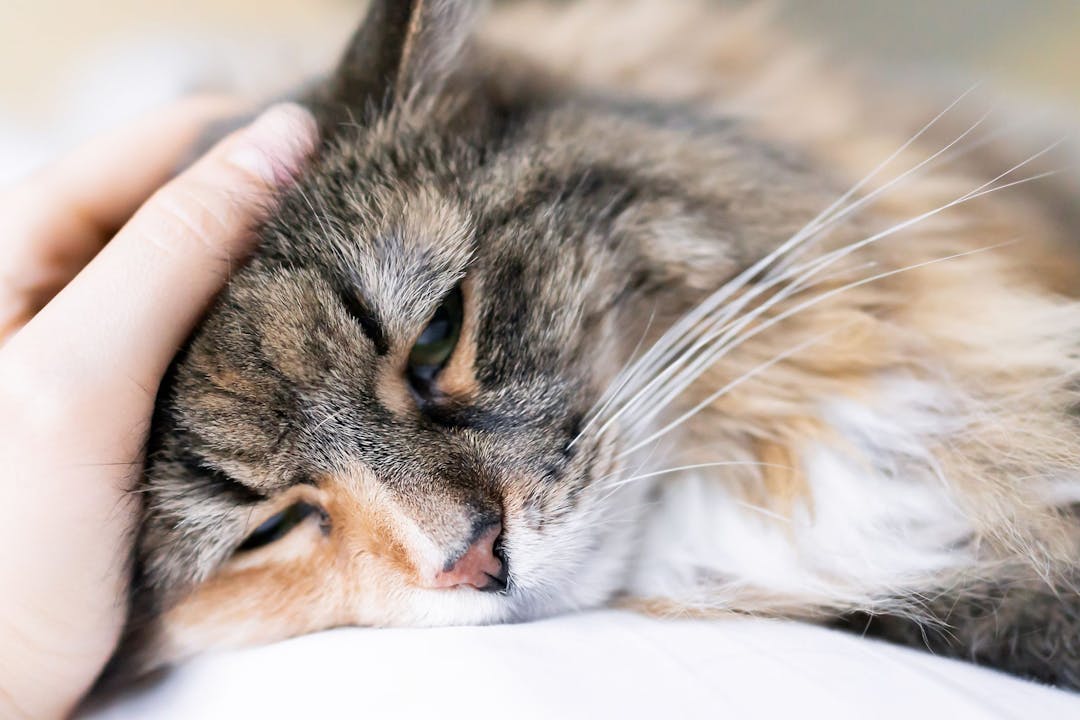Does your cat have arthritis? Just like humans, as cats age, the likelihood of suffering from arthritis increases. While age is often associated with osteoarthritis in cats, there are many causes. The good news is this: though a common condition, osteoarthritis is not inevitable with age and the condition may be prevented in some cats, as well as successfully managed.
What is osteoarthritis in cats?
“Osteo” means bone, and that’s the key to understanding this condition. Osteoarthritis in cats is a degenerative condition of the joints – which means that it gets progressively worse unless intercepted. In cats with osteoarthritis, the normal cartilage cushion in the joints breaks down, eventually allowing the bones within the joint to rub against each other without insulation or protection. The result is inflammation and pain, decreased movement, and sometimes the formation of bone spurs and other types of damage in and around the joint. Osteoarthritis may affect your cat’s backbone, sternum, hips, knees, shoulders and elbows.
Symptoms of osteoarthritis
Compared with the arthritic symptoms of dogs, a cat’s signs are subtle. Cats are notoriously secretive. Cats often hide their pain, making it difficult for pet owners to know that their kitty isn’t feeling like herself. It also makes it difficult for your vet to know whether your cat is pulling away when touched out of pain, or simply because they fear the vet experience.
Cats do not often experience the degree of lameness or limping that affects dogs with osteoarthritis, primarily because osteoarthritis tends to affect cats on both sides of their bodies. Dogs often develop arthritis in a single joint.
Common signs of osteoarthritis in cats include:
- Limping
- Difficulty getting up, especially rising from a curled-up position
- Reluctance to jump, or climb stairs
- Signs of depression or anxiety: won’t play, won’t eat, won’t groom, more litter box accidents
- Obsessive licking of a painful joint area

How to prevent osteoarthritis in cats
Osteoarthritis in cats may result from the combined effect of multiple causes.
- Obesity is an all too common condition and frequently linked with osteoarthritis, but by no means is it the only factor. More likely, obesity makes existing osteoarthritis more painful.
- Injury is another cause. As with humans, tearing the cartilage or fracturing a bone may lead to arthritis in the aftermath.
- And, some cats, especially purebreds and fancy breeds, simply have a genetic predisposition to osteoarthritis. Some of these breeds are Maine Coon cats, Persian, Burmese, Siamese, Abyssinian, Devon Rex and Scottish Folds.
Diagnosing arthritis in cats
Your vet may be able to discern bone malformation and thickening of the joints associated with osteoarthritis through a physical exam, X-ray, MRI or CAT scan. Note that observations you make of your cat’s behavior are also significant.
Treatment for arthritis in cats
Nutritional requirements for cats with arthritis
Nutrition needs to be of the highest quality to offset the effects of osteoarthritis. Some foods and food additives can stimulate inflammation in some cats. Be sure to discuss your cat’s nutrition requirements with your vet. If your cat is overweight, work with your veterinarian to develop a weight loss program and weigh your cat twice weekly.
Environmental adjustments for cats with arthritis
- Adjust your environment. Provide a ramp to the bed and couch, and invest in raised water and food bowls to reduce strain on your cat’s sore areas.
- Invest in a litter box with lowered sides, for easier access.
- Provide an extra-plush bed with a heating element for winter, and a cooling alternative for hot months.
Other treatments
Discuss pain medication and long-term treatment with your vet. There are a few anti-inflammatory medications made just for cats. Most cats handle them well, but they might cause kidney or liver problems in others. Cats that are on them chronically must have their blood work monitored periodically.
Steroids may be a short-term option, depending on your cat’s health history. A variety of drugs may be helpful in managing your cat’s arthritis – be sure to consult with a veterinarian before starting your cat on any treatment.
Glucosamine and chondroitin may help some cats by stimulating the cartilage to produce more joint fluid. Be sure to only use cat-specific formulations.
Encourage movement and exercise. While this may seem counterintuitive, getting your cat to move often lubricates the joints and eases some of the pain of osteoarthritis. Try some new toys and games, and as always, plenty of TLC. With some thoughtful adjustments to your cat’s diet, exercise and living area, you can improve osteoarthritis and help your cat live more comfortably.
Is your cat acting slightly “off?” Reach out to Airvet to discuss what you’re observing. Our veterinary team can help guide your cat’s journey toward optimal health!






